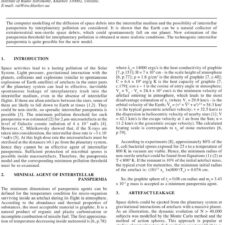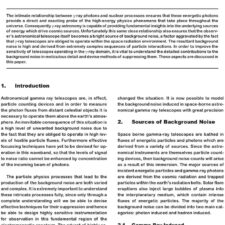Heat Transfer in Fusion Starship Radiation Shielding Systems
£5.00
M. Lamontagne (2018), JBIS, 71, pp.450-457
Refcode: 2018.71.450
Keywords: Fusion, Heat transfer, Heat transport, Radiation
Abstract:
Fusion starship designs require radiation shielding from neutrons and X-rays created by the drive. Even nominally aneutronic fusion reactions, such as Deuterium+He3, produce neutron fluxes through side reactions that may create large cooling requirements in drive structural elements. This paper aims to quantify these emissions and describe the heat transfer systems required to handle these heat loads. Neutrons and X-ray emissions are established for three fusion drive designs, Daedalus, a Daedalus variant named l’Espérance and Icarus Firefly. From nearly zero for Daedalus, they rise to 220 GW for l’Espérance and to 8400 GW for Firefly. The geometric structure of the vehicles is analyzed in order to determine the impingement rate for the neutron and X-Ray radiation. The open nozzle proposed by Miernik is used as an example of design, allowing up to 97% of the radiation to escape. Firefly, the most severely heat loaded design, requires 260 GW of cooling. Two methods are compared to remove the heat to the radiators. Temperature change using Q=mf×cp×∆t for gas and liquid flows, and Q=mf×Ve for phase change. The fluid paths are determined and pump and compressor power requirements are calculated. Then radiator areas and masses are determined. The physical arrangements of radiators are examined in regards to view factors, radiator placement and the influence of these on radiative power. Phase change in liquid metals provides the most powerful heat extraction method for the powers levels involved in starship propulsion, and radiators need to be placed as close to the drive as possible to avoid important mass penalties.





